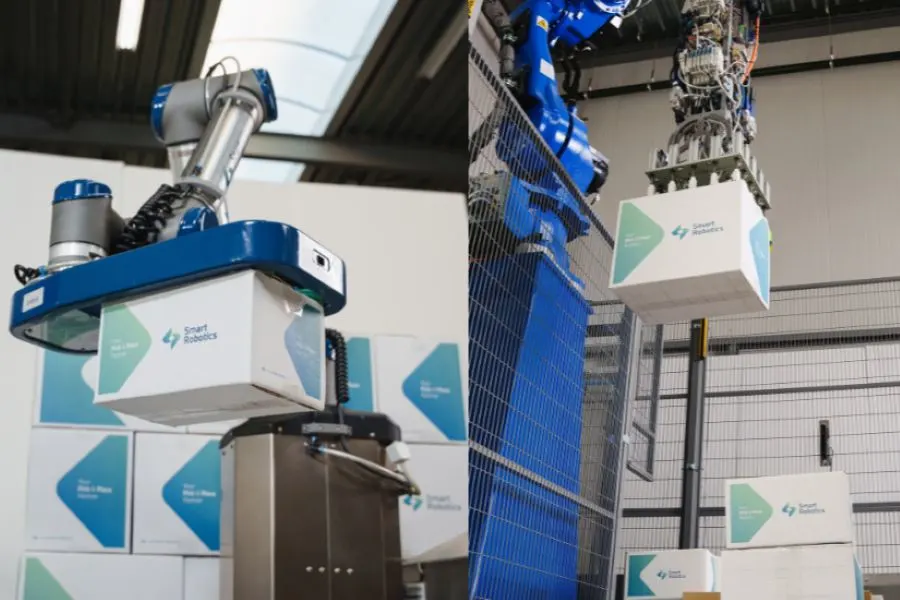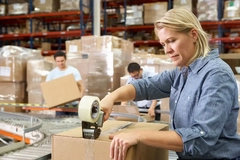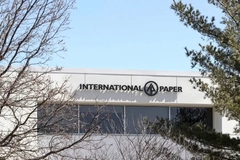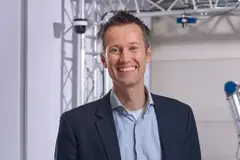Smart Robotics founder and co-CEO explores packaging automation and labor shortages
Key takeaways
- Smart Robotics founder and co-CEO Heico Sandee explains how cobots and AI solutions address labor shortages and rising costs in packaging.
- Automation improves efficiency, reduces reliance on manual labor, and adapts to EU sustainability regulations.
- Companies adopting robotics report higher uptime, fewer damages, and more flexible operations for evolving packaging demands.
Packaging automation has become increasingly important, as rising energy costs, labor shortages, and new EU sustainability rules reshape the industry.
Packaging Insights speaks to Heico Sandee, founder and co-CEO at the Netherlands-based Smart Robotics, about how its cobot and AI solutions can help companies maintain efficiency, reduce dependency on manual labor, and adapt to evolving regulations.
What solutions does Smart Robotics specialize in?
Sandee: We are a company that delivers robotics and automation to the packaging industry and warehouses in general. Our solutions tackle the packing of boxes, item picking, palletizing, depalletizing, and all kinds of solution handling robots for packing.
What are the main challenges Dutch packaging companies are currently facing?
Sandee: The biggest issue is the rising costs of energy and labor. Wages are increasing quite rapidly, and still, the industry is very much dependent on human labor. That’s also why we are providing these automation solutions to help companies become less dependent on human labor.
The last cost-related issue is linked to sustainability regulations, which are pushing companies to invest in new materials, machinery, and processes as a whole, to deliver on these updated sustainability goals.
 Smart Robotics’ Mixed Case Palletizer for neat and fast stacking of diverse boxes.Are Dutch packaging companies facing labor shortages?
Smart Robotics’ Mixed Case Palletizer for neat and fast stacking of diverse boxes.Are Dutch packaging companies facing labor shortages?
Sandee: Yes, definitely, and that especially holds for the more repetitive labor. We hear a lot of our customers say that they see a big turnover at such positions.
Labor regulations are important here as well. For instance, if you look at companies in the Scandinavian countries, which are front runners on such regulations, workers are allowed to lift up to 25 kg and around 12 lifts per minute. This kind of movement is quite important if you do a palletizing or a depalletizing task. There are not a lot of people who are capable or allowed to lift anymore.
People typically don’t really want to do those very repetitive jobs anymore, hence the high turnover. That’s why most companies actually come to us for automation, and the most common reason they give is labor shortages. Labor shortages are increasing and we will see them happening more and more in the future.
What results have companies already achieved by adopting Smart Robotics’ automation?
Sandee: We mainly deliver throughout Europe. We have over 100 robots in the field, and most of them help companies that previously struggled to keep their production up and running. We have customers that, prior to automatization, had delays and issues even with keeping their facilities running because of not having the people available to run them.
Having automation helps a lot because once you have it running, it will keep running. We’ve just installed a new robot at a co-packing company here in the Netherlands. It previously struggled to keep up with the output that they are running at, but it is currently running at a 99.99% uptime five days a week, 16 hours per day, consistently.
An additional benefit of automation is that when machinery is stacking boxes or pallets, then every box or pallet is stacked perfectly. And typically you also see less damages, and with this less need for rework and returns.
What are the mistakes packaging companies make when adopting your technology?
Sandee: What often happens is that they think automation is replacing a person with a machine or a robot, but this typically isn’t the case, or it’s not that simple. What we’re typically doing is looking at their system as a whole and identifying specific pain points that are probably beneficial to replace. But then it also involves looking at the upstream and the downstream parts of the process to actually get to a fully aligned and updated process, which might need some more automation, or it might need some changes in the process.
Another mistake we see is that there is not enough attention paid to the level of flexibility within automation. Typically it’s thought that packaging processes will keep on running the way they do currently. But what we see is that things are changing, and we’ve already talked a little bit about how that is happening in terms of environmental sustainability.
Packaging is changing, and demands are changing due to, for instance, how much air we are allowed to ship. Because of all these reasons, the system, products, and the environment are continuously changing. So when thinking of automating a part of the process, it’s important that this automation is also flexible. Humans are flexible by nature, and so should be automation. If something changes, then automation should be able to adapt and accommodate these changes, and that’s why we are working a lot with AI. Our solutions are driven by AI because it is designed to be able to adjust for things that haven’t been programmed into the machine.
How are sustainability regulations impacting operations?
Sandee: Less air needs to be shipped. Packaging is becoming tailored for the products inside. Before we saw mainly a limited set of standard box sizes, typically at the packing facility, now we see more and more boxes designed for each specific product. And with this the variability of products, packaging, and packaging material are a lot broader.
Some items might be more efficiently packed in a bag and others in a box, but then every box might have a different dimension. Our machines are able to accommodate on demand box making as well. And then the next point is how to get all these boxes and bags on a shipping container or a pallet. There are quite a few challenges.
That’s why, for instance, we recently added a Mixed Case Palletizer to our portfolio, able to stack any box that could arrive as neatly as possible at a given point and creating a stack that is as stable for transportation as well. Regulations lead to new packaging, and new packaging needs lead to new machinery. My point is that we really need to look at the system as a whole, where something changes, a lot of different things might change as well.











